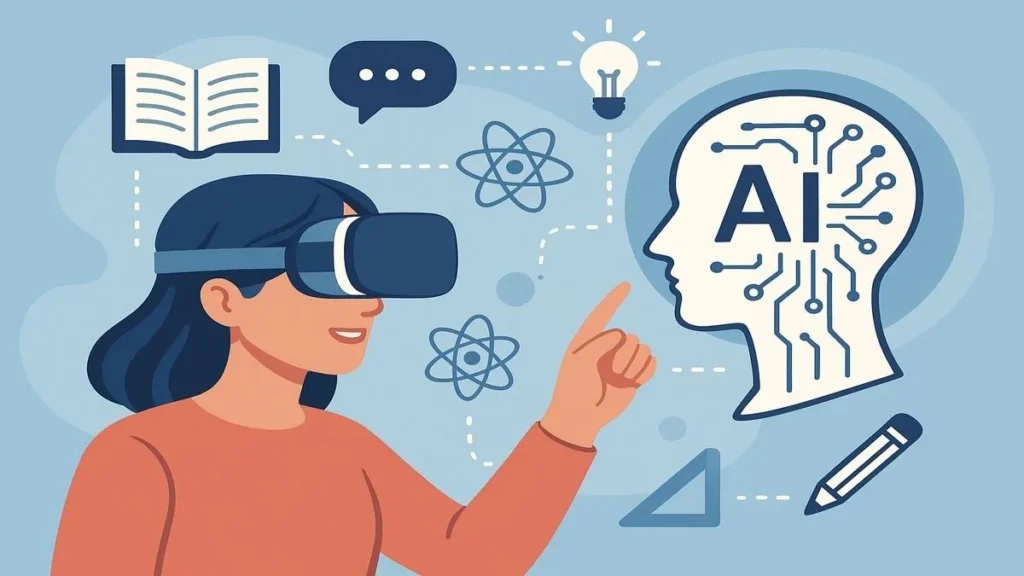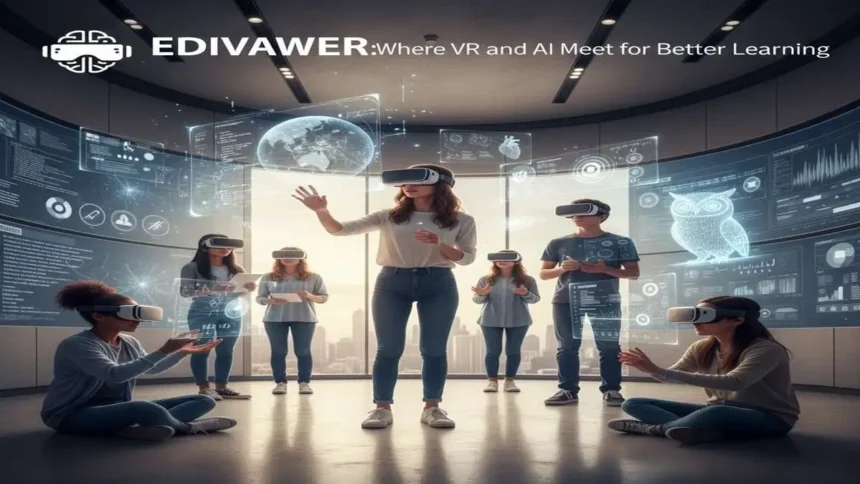Edivawer is an innovative educational platform that merges Virtual Reality (VR), Augmented Reality (AR), and Artificial Intelligence (AI) to create deeply interactive and adaptive learning environments. By transforming traditional classrooms into immersive spaces, it enables learners to engage actively through realistic simulations and collaborative virtual settings. This integration of advanced technologies shifts education from passive listening to experiential participation, enhancing motivation, comprehension, and knowledge retention, ultimately redefining how learning is experienced in the digital age.
- Table of Contents
- The Evolution of Virtual Reality in Education
- How Edivawer’s Technologies Transform Learning
- Real-World Use Cases and Applications
- Transforming Online Learning Platforms
- Key Functional Components and System Architecture
- Implementation Challenges in Schools
- Edivawer Revolutionizes Global Learning
- How Edivawer addresses practical barriers
- The Future of Edivawer
- Final Thought
Table of Contents
The Evolution of Virtual Reality in Education
Virtual Reality (VR) in education has evolved from early experimental simulations in the 1990s to today’s immersive, AI-enhanced learning platforms. Initially limited by high costs and technical barriers, VR’s growth accelerated with affordable headsets and powerful computing. Modern educational VR now enables interactive labs, historical reconstructions, and skill-based training in safe virtual environments. This evolution has transformed teaching from theoretical instruction to experiential learning, fostering engagement, collaboration, and deeper understanding across diverse academic and professional disciplines.
How Edivawer’s Technologies Transform Learning
It combines cutting-edge technologies, Virtual Reality (VR), Augmented and Mixed Reality (AR/MR), and Artificial Intelligence (AI), to create immersive and adaptive learning experiences that actively engage students. Here’s a closer look at how each technology contributes:
1. Immersive Virtual Reality (VR)
VR in Edivawer allows learners to step into fully interactive 3D environments, from virtual labs to historical reconstructions. By removing outside distractions, VR enhances focus and engagement. According to a 2024 review in Computers & Education, courses using VR reported significant improvements in learner motivation and understanding of complex concepts.
2. Augmented and Mixed Reality (AR/MR)
AR and MR bring digital content into real-world settings. In Edivawer, AR lets students explore 3D annotations, analyze data visualizations, and participate in virtual fieldwork. MR goes further by combining virtual and real objects, offering hands-on learning experiences that feel authentic and practical.
3. AI-Powered Adaptive Learning
At the heart of Edivawer is an AI engine that personalizes the learning journey. It monitors learner progress, adjusts difficulty, and provides instant feedback. AI-driven virtual tutors and interactive guides ensure each learner receives a tailored, engaging experience that adapts in real time.
4. Seamless Integration for Enhanced Learning
The combination of VR, AR/MR, and AI creates a unified, responsive learning environment. For example, if a learner struggles in a VR simulation, the AI can trigger an AR overlay with guidance or launch a targeted mini-tutorial. This synergy ensures lessons are coherent, adaptive, and learner-focused. Edivawer’s modular design also supports analytics, scalability, and continuous improvement.

Real-World Use Cases and Applications
- STEM Education: Students can perform virtual chemistry experiments, explore physics simulations, or manipulate 3D molecular models in fully immersive labs.
- Medical and Healthcare Training: VR and AR allow medical students and professionals to practice surgeries, anatomy dissections, and patient simulations safely.
- Engineering and Technical Skills: Learners can design, test, and troubleshoot complex machinery or infrastructure in a virtual environment before implementing it in the real world.
- Historical and Cultural Learning: Students can explore ancient civilizations, museums, or cultural sites through interactive VR reconstructions.
Transforming Online Learning Platforms
Edivawer is revolutionizing online learning by integrating VR, AR, and AI to create immersive, interactive, and adaptive educational experiences. Unlike traditional e-learning, it transforms passive content consumption into active participation through realistic simulations, collaborative virtual spaces, and AI-driven personalized guidance. This approach enhances engagement, knowledge retention, and skill development, positioning it as a leading model for the next generation of online learning platforms in both academic and professional settings.
Key Functional Components and System Architecture
- Immersive VR/AR Modules: Enable learners to interact with 3D simulations, virtual labs, and real-world overlays for experiential learning.
- AI-Powered Adaptive Engine: Tracks performance, personalizes content, adjusts difficulty, and provides real-time feedback to optimize learning paths.
- Virtual Tutors and Guides: AI-driven assistants support learners through instructions, hints, and interactive Q&A.
- Collaborative Multiuser Environment: Facilitates team-based projects, discussions, and real-time problem-solving in virtual spaces.
Implementation Challenges in Schools
- High Initial Costs: VR/AR hardware and software can be expensive, limiting widespread adoption.
- Technical Infrastructure: Schools may lack sufficient bandwidth, storage, or compatible devices to support immersive platforms.
- Teacher Training: Educators require training to effectively integrate Edivawer into lesson plans and manage virtual classrooms.
- Content Alignment: Ensuring VR/AR modules align with curriculum standards and learning objectives can be challenging.
- Accessibility Issues: Students with disabilities or limited access to technology may face barriers.
Edivawer Revolutionizes Global Learning
Edivawer is transforming global education by merging VR, AR, and AI to create immersive and adaptive learning experiences. Moving beyond traditional classrooms, it empowers learners to actively participate in realistic simulations and collaborative environments. Studies show that such technology-driven methods enhance motivation, engagement, and knowledge retention. By combining innovation with evidence-based pedagogy, it is redefining how learners worldwide access, interact with, and master knowledge in the digital age.
How Edivawer addresses practical barriers
Two practical barriers often limit the impact of immersive learning: cost/logistics and pedagogy. it appears to address both:
- Cost & accessibility: By supporting a mix of device classes (mobile VR, tethered headsets, and AR on tablets/phones), platforms like Edivawer can meet institutions at different budget points and progressively scale deployments.
- Pedagogical integration: Edivawer’s authoring tools and analytics help instructors design lessons that pair simulations with formative checks, debriefs, and reflection, essential elements to translate an engaging simulation into durable learning.
The Future of Edivawer
Edivawer represents the future of education by merging VR, AR, and AI to create fully immersive and adaptive learning experiences. As technology advances, we can expect more personalized, collaborative, and accessible virtual classrooms, bridging gaps between theory and practice. Its integration into schools, universities, and corporate training programs promises enhanced engagement, improved knowledge retention, and skill development, shaping a new era of interactive, technology-driven education worldwide.
Final Thought
Edivawer is redefining the educational landscape by combining VR, AR, and AI to create interactive, adaptive, and immersive learning experiences. By transforming learners from passive recipients into active participants, it enhances engagement, motivation, and knowledge retention. While challenges like cost, infrastructure, and training exist, the platform’s potential to revolutionize both academic and professional education is undeniable, positioning it as a pioneering model for the future of digital learning.






